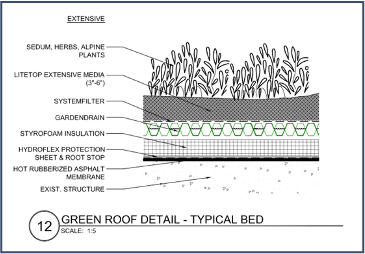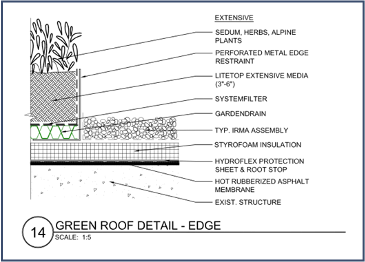|
Senior Thesis | The Pennsylvania State University | Architectural Engineering | AE Computer Lab | Contact Lynn This page was last updated on April 4, 2011 by Lynn Appel and is hosted by the AE Department © 2011 |
|
Note: While great efforts have been taken to provide accurate and complete information on the pages of CPEP, please be aware that the information contained herewith is considered a work‐in progress for this thesis project. Modifications and changes related to the original building designs and construction methodologies for this senior thesis project are solely the interpretation of Christopher Ankeny. Changes and discrepancies in no way imply that the original design contained errors or was flawed. Differing assumptions, code references, requirements, and methodologies have been incorporated into this thesis project; therefore, investigation results may vary from the original design. |
|
Office Building in D.C. | Washington, DC
Lynn Appel Construction Management |


|
General Building Information |

|
Project Team Directory |
|
Architecture - Design and Functional Components |
|
The 1960s-era laboratory building will be transformed to Class A office space to accommodate approximately 2,000 Health and Human Services and House of Representatives committee staff members. A new 20’ by 100’ eight story central atrium is being cut into the building with interior storefronts and a skylight as well as a cantilevered stair. There are also new stone floors, interior architectural finishes, etc. As well as the renovation of five elevators and the installation of three new elevators, there will also be brand new mechanical systems including new cooling towers, chillers, etc. as well as an overhaul of the existing switchgear systems. |
|
Architecture - Major National Codes |
|
Architecture - Major Zoning Requirements |

|
C-3-C per DC Zoning Map (click on map to the right) Height Limit - 90 ft. per DC Municipal Regulations Penthouse Height - Maximum 18’-6” high, minimum setback from setback from exterior walls is at least equal to its height. No. of Stories - No limit per DC Municipal regulations Max. Lot Occupancy - 80% per DC Municipal regulations |
|
Building Enclosure |
|
Building Façade: The exterior of the Office Building in D.C. consists of a combination of curtain wall and limestone assembly. All of the limestone being used is existing limestone from the existing building. A typical south and north façade (the long sides of the building) is made up of projecting window bays (laminated insulating glazing units) between strips of existing limestone and granite. A typical east and west façade includes two bays of laminated insulating glazing units and a single bay of existing windows. Similar to the north and south facades, the limestone is existing from the original building. Roofing: The roofing system, doubling as an extensive green roof, consists of: existing structure, hot rubberized asphalt membrane, Hydroflex protection sheet and root stop, Styrofoam insulation, Garden Drain, system filter, litetop extensive media (3”-6”) and topped with sedum, herbs, and alpine plants. |



|
Sustainability Features |
|
The project is currently being constructed as a LEED Silver project, but the GSA has expressed a desire to upgrade the building to LEED Gold from the United States Green Building Council. Innovative environmental aspects of the project include a green roof, maximum use of natural light in the interior, storm water retention for landscape irrigation, energy saving Light Emitting Diodes (LEDs), smart building controls technology, and charging stations in the lower parking level for Electric Vehicles.
Please click here to view the LEED Scorecard for the Office Building in D.C. |
|
Photo courtesy of Google. |
|
Photo courtesy of the Washington DC Office of Zoning. |
|
Photo courtesy of Turner Construction. |
|
Details found on drawing A_530. |
|
Home | Biography | Building Statistics | Abstract | Reports | Research | Proposal | Presentation | Final Report | Reflection | e-Studio | Contact |
|
Building Statistics - Part 2 |
|
Construction:
This project is being delivered using the traditional design-bid-build method with the assistance a Construction Management Agency. The owner holds contracts with the Architect, General Contractor and Construction Manager and the General Contractor holds contracts with all of the different sub-contractors. The sub-contractors were chosen first by prequalification and then by the lowest bid. The Construction Manager assists the Architect and Owner with design, budgeting, and scheduling and helps run the day-to-day operations.
Electrical:
The Office Building receives its power from the underground electric lines. The building has both 480/277 and 208/120 service. From the switchgear, some of the power is then stepped down from 488/277 Volts to 208/120 Volts by 8 transformers located in the basement and 4 transformers located in the penthouse. There is also an emergency generator located in the penthouse to provide back-up power to the critical building systems during a power outage.
Mechanical:
The mechanical rooms are located in the sub-basement and penthouse levels. The Office Building is undergoing a complete removal and replacement of all MEP equipment with the exception of the chiller plant, which is located in the sub-basement. Two out of the four chillers in the plant were recently exchanged for new ones so they will remain while the two older chillers will be replaced. The chiller plant also serves the Ford Building which is located across the street from the Office Building. Air handling units and cooling towers are located in the penthouse of the Office Building.
Structural:
The Office Building is a concrete structure with a 12” concrete slab in the sub-basement and basement and 8” concrete slab in the elevated floors. Because of the new curtain wall, a steel moment frame needs to be installed around the perimeter of the building. The new steel moment frame includes W18x42 steel columns and W18x42 steel beams. A composite metal deck is also being placed around the perimeter of the building to fill in the gaps between the existing slab and curtain wall.
Transportation:
All six passenger elevators in the lobby will be replaced with 3,500 pound capacity operating at 350 fpm. |
|
Building Name |
|
Cannot disclose name of building |
|
Location |
|
200 C Street SW, Washington, DC 20024 |
|
Building Occupant Name |
|
Cannot disclose occupant, but owned by GSA |
|
Type of Building |
|
Office Space - Group B Business Occupancy |
|
Size |
|
550,000 ft2 |
|
Number of Stories |
|
Below Grade - 2 Above Grade - 6 + Penthouse |
|
Dates of Construction |
|
March 2010 - Summer 2012 |
|
Cost Information |
|
Withheld at the request of the owner. |
|
Project Delivery Method |
|
Design - Bid - Build |
|
Owner |
|
General Services Administration (GSA) |
|
|
General Contractor |
|
Turner Construction |
|
|
Construction Manager |
|
Heery International |
|
|
Architect |
|
Boggs and Partners |
|
|
Structural Engineer |
|
AECOM |
|
|
MEP Engineer |
|
GHT |
|
|
Civil Engineer |
|
A. Morton Thomas and Associates, Inc. |
|
|
Landscape Architect |
|
EDAW |
|
GSA Facilities Standard PBS - P100, March 2005 |
|
International Building Code (IBC) 2006 |
|
Life Safety Code (NFPA 101) |
|
International Fire Code (IFC) |
|
International Plumbing Code (IPC) |
|
International Mechanical Code (IMC) 2006 |
|
National Electric Code (NFPA 70) 2005 |